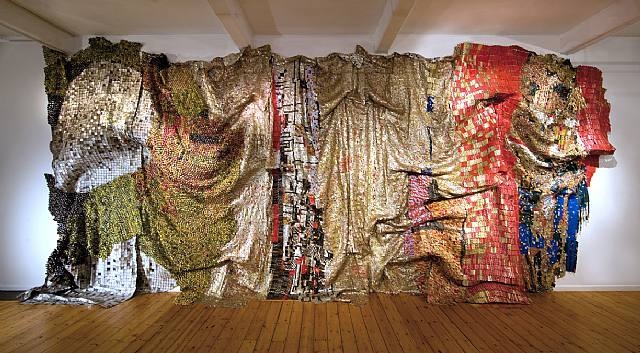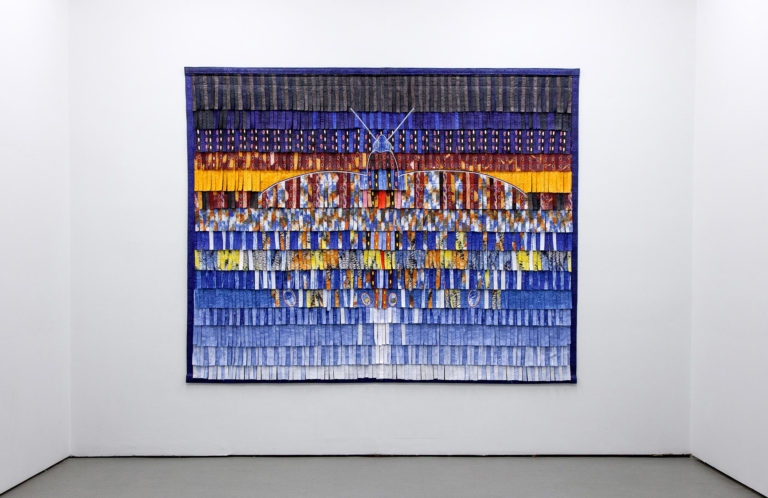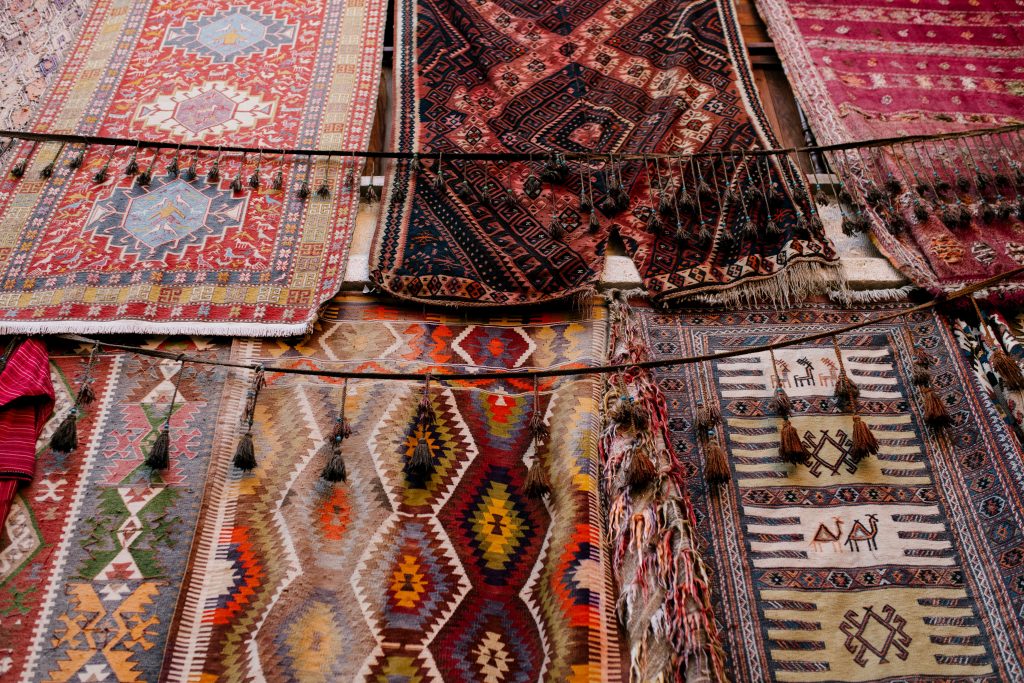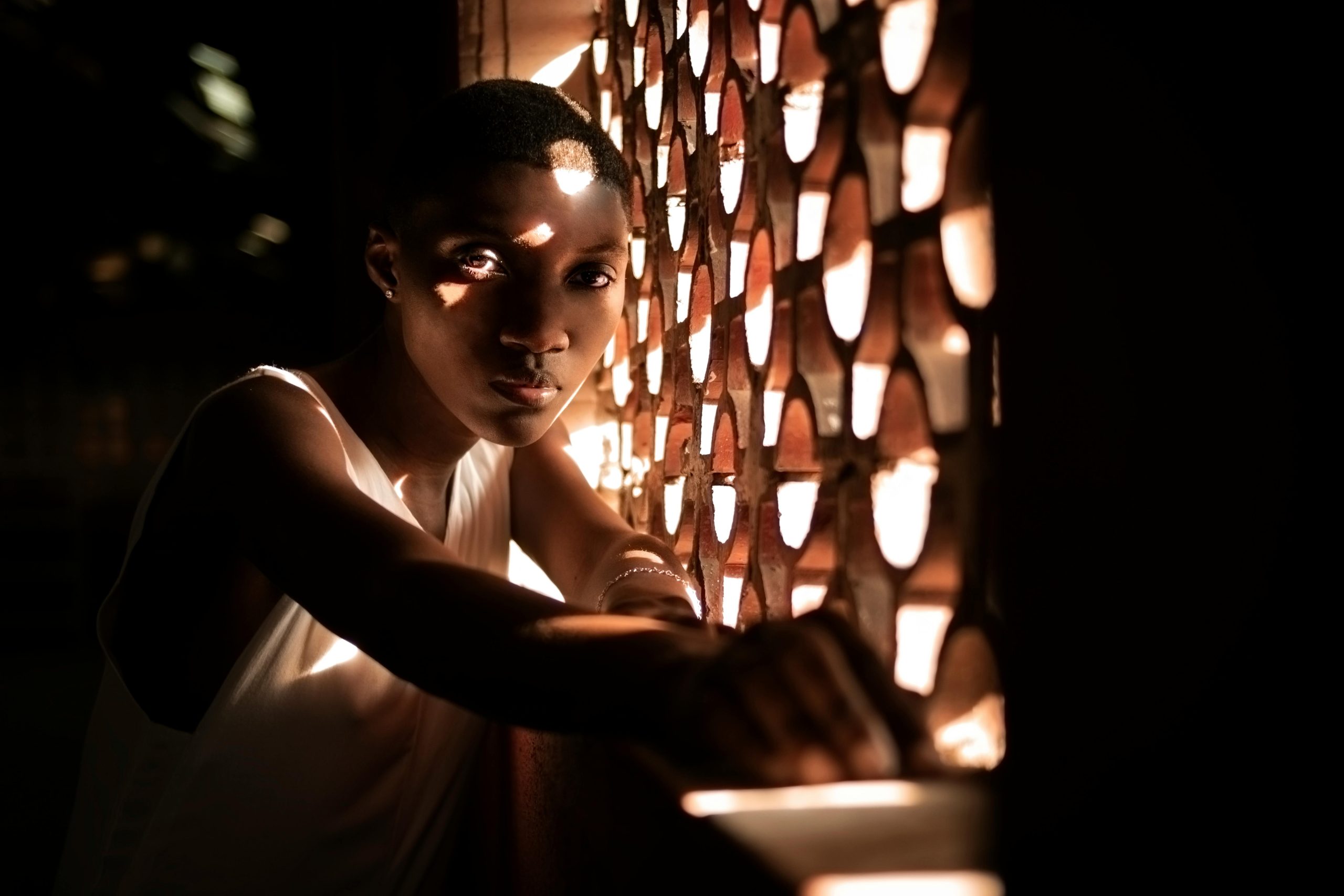In France, the stance of African artists is incrementally becoming a driving force within museums and collections. African heritage maintains a substantial position, captivating art enthusiasts through a divers plethora of exhibitions, dynamic events, and study days hosted across the nation’s museums.
Moreover, publications, namely printed media, serve as reliable instrument, actively amplifying the richness of African artistry within the French cultural sphere. With each showcase, African artists claiming more visibility, their naturalistic perspectives resonate more profoundly with the halls of French museums.
Additionally, this surge signifies the rising dominance of African art, paving the way for a new era, in which cultural exchange thrives, and artistic narratives intertwine, enriching the global art scene.
Celebrated African Artists Shaping the French Art Scene
1.El Anatsui
El Anatsui, a Ghanaian sculptor, best known for his monumental installations making use of discarded materials such as bottle caps and metal pieces. His artistic work often tackles themes such as globalization, consumerism, and cultural identity. El Anatsui’s transformative sculptures blur the lines between sculpture and painting, presenting a new lens from which viewers can reconsider traditional notions of materiality and form.
- Most known Works : “Gravity and Grace”, “Black River”, “In The World But Don’t Know The World”
- Prices: El Anatsui’s works fetched prices ranging from $200,000 to over $1 million in auction.
- Background: Born in 1944 in Ghana, El Anatsui studied art in Nigeria and has exhibited his dazzling works worldwide. A recipient of numerous international awards, including the Golden Lion for Lifetime Achievement at the Venice Biennale in 2015.

2. Chéri Samba
Chéri Samba, a Congolese painter, is well known for his colorful, lively, and satiric depiction of everyday life in Africa. Above all, His vibrant paintings often filled with text and humor, critique and address social and political issues. Chéri Samba’s bold and appealing artworks, tend to challenge prevailing stereotypes, often filled with commentary on the perplexities of African societies.
- Most Known Works: “J’aime le Couleur ,” “La Vie est Belle Malgré Tout,” “Les Mariés du ciel”
- Prices: Prices for this iconic African artist’s paintings typically range from $20,000 to $100,000 depending on size and complexity
- Background: Born in 1956 in the Democratic Republic of Congo, Chéri Samba Gained immense recognition in the 80s as a part of the ” Popular painting” movement. Nevertheless, he has exhibited extensively in Europe and Africa, his broadly considered as one of the most influential contemporary African artists.
3.Abdoulaye Konaté
Abdoulaye Konaté, a well-stablished Malian textile artist, known for his intricate colorful tapestries that deal with notions such as history, culture, and contemporary social dynamics. His works usually centered around fundamental traditional Malian textile techniques and motives.
- Most Known Works: “Composition Bleue,” “L’arbre,” “Le Passage Des Larmes”
- Prices: Prices for Abdoulaye Konaté’s tapestries often range from $10,000 to $50,000, depending on size and complexity
- Background: Born in 1953 in Mali, Abdoulaye Konaté studied at the National Institute of Art in Bamako and later at The Conservatoire des Arts et Métiers Multimédia in France. Nevertheless, he has presented Mali at the Venice Beinnale and has exhibited his works on an international basis.

Western Perception of African Art
The western embrace of African art has long been a journey of evolving perspectives and fluctuating stances. Initially, looked at as mere tasteless curiosities from “less civilized” communities, African objects resided in natural history museums, instead of art galleries.
However, the 20th century brought forth a pivotal point. The immense abstraction and power of African sculptures captivated big artists such as Pablo Picasso, challenging western notions of art. This led to a new recognition of African art, being displayed in prestigious museums, valued for its artistic merit.
This shift reflects a broader struggle in terms of defining “art.” Western ideal perspective mainly focused on uniqueness and non-functionality, incrementally shifted toward a more inclusive frame, encompassing the rich symbolism and functionality of African works. Despite progress, western acceptance remains complex and multifaceted, influenced historical biases and evolving art theories.
How African Artists Challenges French Artistic Identity
The arrival of African art in French museums came in as a disruption to a long-held perception of artistic superiority. Traditionally, French identity was deeply intertwined with the broader Eurocentric view of art history, placing Western aesthetics at the pinnacle. However, the undeniable artistic merits and dense cultural reflections of African artworks defused prior perceptions, further enforcing a reevaluation of these established hierarchies of artistic values.
Studies such as “The Colorful Revolution: How African and Oceanic Art Changed Western Art” by Mary Roberts (2006) illustrates how the bold and lively forms and colors of African sculptures directly influenced European artists such as Matisse and Pablo Picasso who draw heavily from African motives for works such as “Les Demoiselles d’Avignon”. Such examples stood as challenges against the radical and irrational notion of a one-way flow of artistic influence.

In a nutshell, the rise of African artists in the France’s art scene, with figures such as EL Anatsui, Chéri Samba and Abdoulaye Konaté, marks a pivotal cultural shift. Their artistic scoops brought forth fresh perspectives to French museums, fostering a more divers and interconnected understanding of global creativity and aesthetic evaluation.







